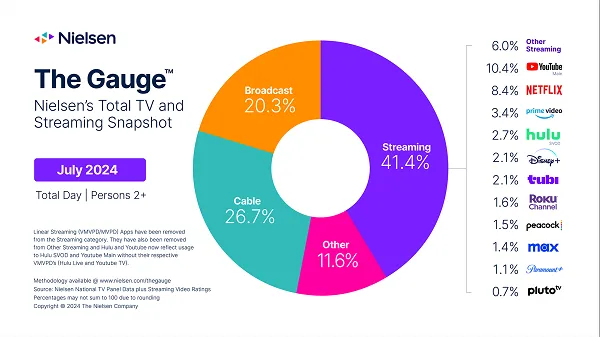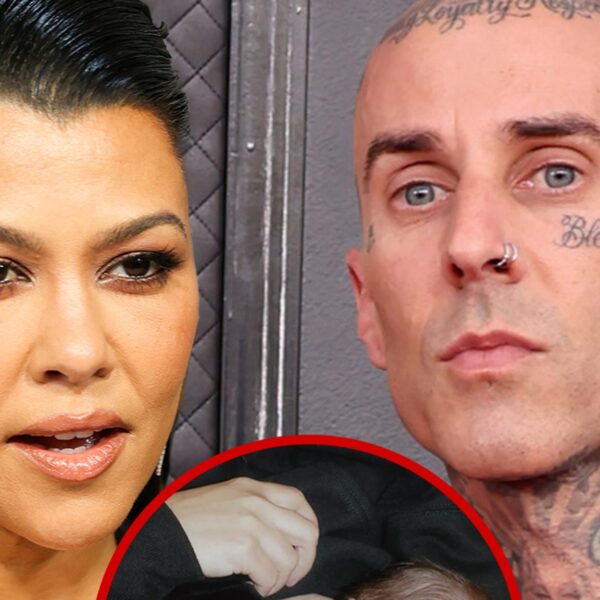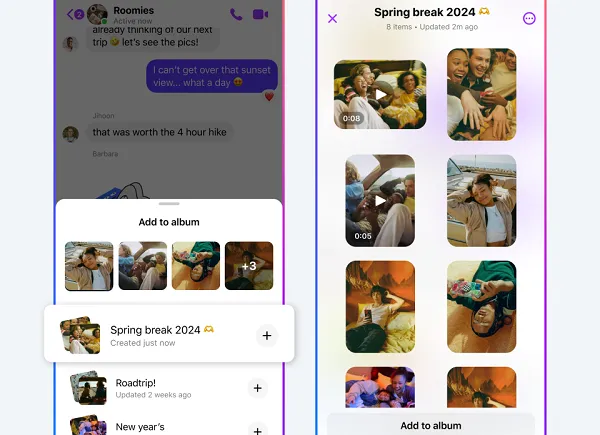YouTube continues to rise as a key entertainment option, with the latest Nielsen TV and streaming report showing that YouTube now makes up 10.4% of all TV viewing in the U.S., the first streaming platform to reach the double-digit mark.


As you can see in the above chart, streaming is now the single dominant content source in Nielsen’s tracking chart. Traditional broadcast and cable TV combined still top overall viewing behavior, but streaming is gaining fast, with YouTube being the dominant streaming source.
As explained by Nielsen:
“Streaming made TV history for a second consecutive month in July as it notched the most dominant performance by a single viewing category ever in Nielsen’s The Gauge, accounting for 41.4% of TV viewing. Streaming levels were over 5% higher in July compared to June, leading streaming to grow its share of TV by more than a point (+1.1 pt.) and shatter the previous record it set just last month.”
What’s more interesting here is that the Olympics began at the end of the month, which had some impact on TV and selected streamer viewing. And yet, YouTube still dominated, and as younger users continue to age up with YouTube as their key viewing platform of choice, that’ll only continue to rise.
These days, young viewers are far more likely to be aware of MrBeast’s latest upload than a new show from a TV celebrity. Well, maybe MrBeast is not the best example, given his team’s recent woes, but the point is, younger viewers don’t watch traditional TV anymore, with legacy media slowly dying out with every generation.
Most streaming offerings from traditional providers are also flailing, with YouTube’s ubiquity and connection with youngsters setting the foundation for dominance in entertainment media.
As such, it should be a key consideration for all digital marketers seeking to maximize their messaging. Just as TV ads were once the best opportunity for increasing brand awareness, YouTube is now taking that mantle, but with more advanced targeting to specific audiences, helping to reduce ad costs.
So next time you see an ad for a new TV show and you wonder “Why are they still putting [x celebrity] on TV?” or “Why are they still pushing this show?” Just know that traditional TV is not being marketed to you, it’s being promoted to older viewers who are still aligned with what it once was.
Teenagers are driving the next shift, and YouTube is fast becoming the dominant player as a result.















